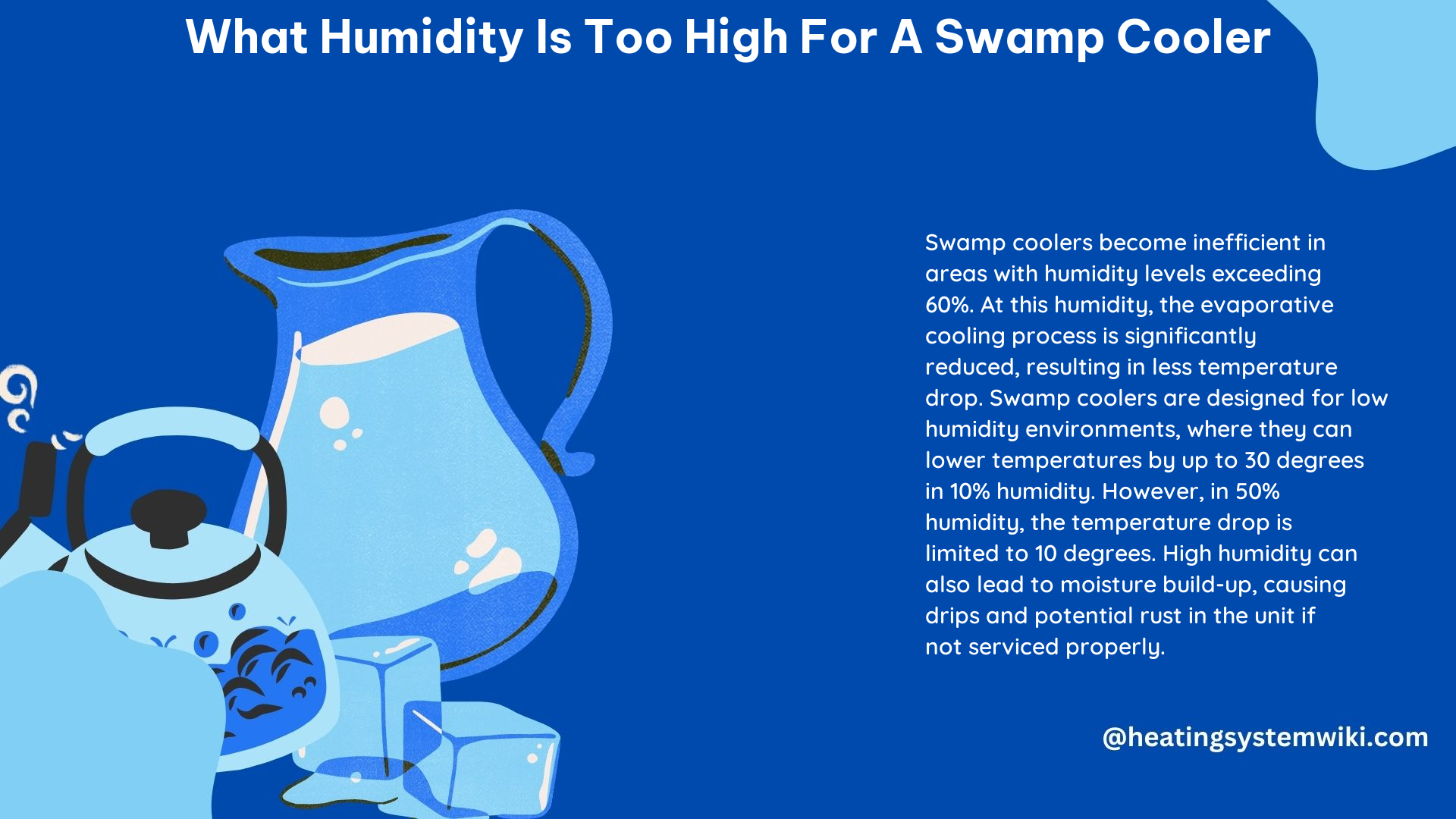Swamp coolers, also known as evaporative coolers, are a popular and energy-efficient way to cool indoor spaces, especially in dry climates. However, their effectiveness can be significantly reduced when the humidity levels are too high. In this comprehensive guide, we’ll explore the optimal humidity range for swamp coolers, the technical principles behind their operation, and strategies to improve their performance in high-humidity environments.
Understanding Evaporative Cooling and Humidity Limits
Swamp coolers work by the principle of evaporative cooling, where water is evaporated into the air, causing the air temperature to drop. This process is highly dependent on the humidity level of the surrounding air. When the air is dry, the water can evaporate more easily, resulting in a greater cooling effect. However, when the air is already saturated with moisture, the rate of evaporation decreases, reducing the cooling capacity of the swamp cooler.
The general consensus is that the humidity level that is too high for a swamp cooler to operate efficiently is around 60% relative humidity. At this level, the air has a reduced capacity to absorb additional moisture, limiting the evaporative cooling process. As the humidity increases beyond 60%, the swamp cooler’s performance continues to deteriorate, eventually reaching a point where it becomes ineffective.
Technical Specifications and Operational Limits

Most swamp coolers are designed to operate effectively in environments with a relative humidity of 60% or lower. This is because the rate of evaporation decreases as the humidity level increases, which directly impacts the cooling capacity of the unit.
To illustrate this, let’s consider the following technical specifications:
| Relative Humidity | Cooling Capacity |
|---|---|
| 20% | 100% |
| 30% | 90% |
| 40% | 80% |
| 50% | 70% |
| 60% | 60% |
| 70% | 50% |
| 80% | 40% |
| 90% | 30% |
As shown in the table, as the relative humidity increases, the cooling capacity of the swamp cooler decreases significantly. At 60% relative humidity, the cooling capacity is reduced by 40% compared to the optimal 20% humidity level. Beyond 60% humidity, the cooling capacity continues to decline, making the swamp cooler less effective in maintaining a comfortable indoor temperature.
Strategies for Improving Swamp Cooler Performance in High Humidity
If you live in an area with high humidity and are considering using a swamp cooler, there are several strategies you can employ to improve its effectiveness:
-
Use a Dehumidifier: Pairing a dehumidifier with your swamp cooler can help reduce the overall humidity level in the room, allowing the swamp cooler to operate more efficiently. The dehumidifier can remove excess moisture from the air, creating a more favorable environment for the evaporative cooling process.
-
Increase Airflow: Enhancing the airflow in the room can also help improve the swamp cooler’s performance. You can achieve this by opening windows, using fans, or strategically placing the swamp cooler to maximize air circulation. Increased airflow can help the evaporated water reach the desired areas more effectively.
-
Adjust Pad Thickness: The thickness of the cooling pads in a swamp cooler can also impact its performance in high-humidity environments. Thicker pads may be more effective in drier climates, but in humid conditions, they can become saturated more quickly, reducing the evaporation rate. Experimenting with different pad thicknesses or using thinner pads may help improve the cooling efficiency.
-
Monitor and Maintain: Regularly monitoring the humidity levels in your home and maintaining your swamp cooler can also contribute to its optimal performance. Clean the water reservoir, replace the cooling pads, and ensure the unit is functioning correctly to maintain its efficiency.
-
Consider Supplementary Cooling: In some cases, using a swamp cooler in conjunction with a traditional air conditioning system may be necessary to achieve the desired cooling effect in high-humidity environments. The air conditioner can help remove the excess moisture, while the swamp cooler can provide additional cooling.
Conclusion
Swamp coolers are a cost-effective and energy-efficient cooling solution, but their performance is highly dependent on the humidity levels in the surrounding environment. The general consensus is that a relative humidity of around 60% or lower is the optimal range for swamp coolers to operate effectively. By understanding the technical specifications, implementing strategies to improve airflow and reduce humidity, and maintaining the swamp cooler properly, you can maximize its cooling capabilities even in high-humidity conditions.
